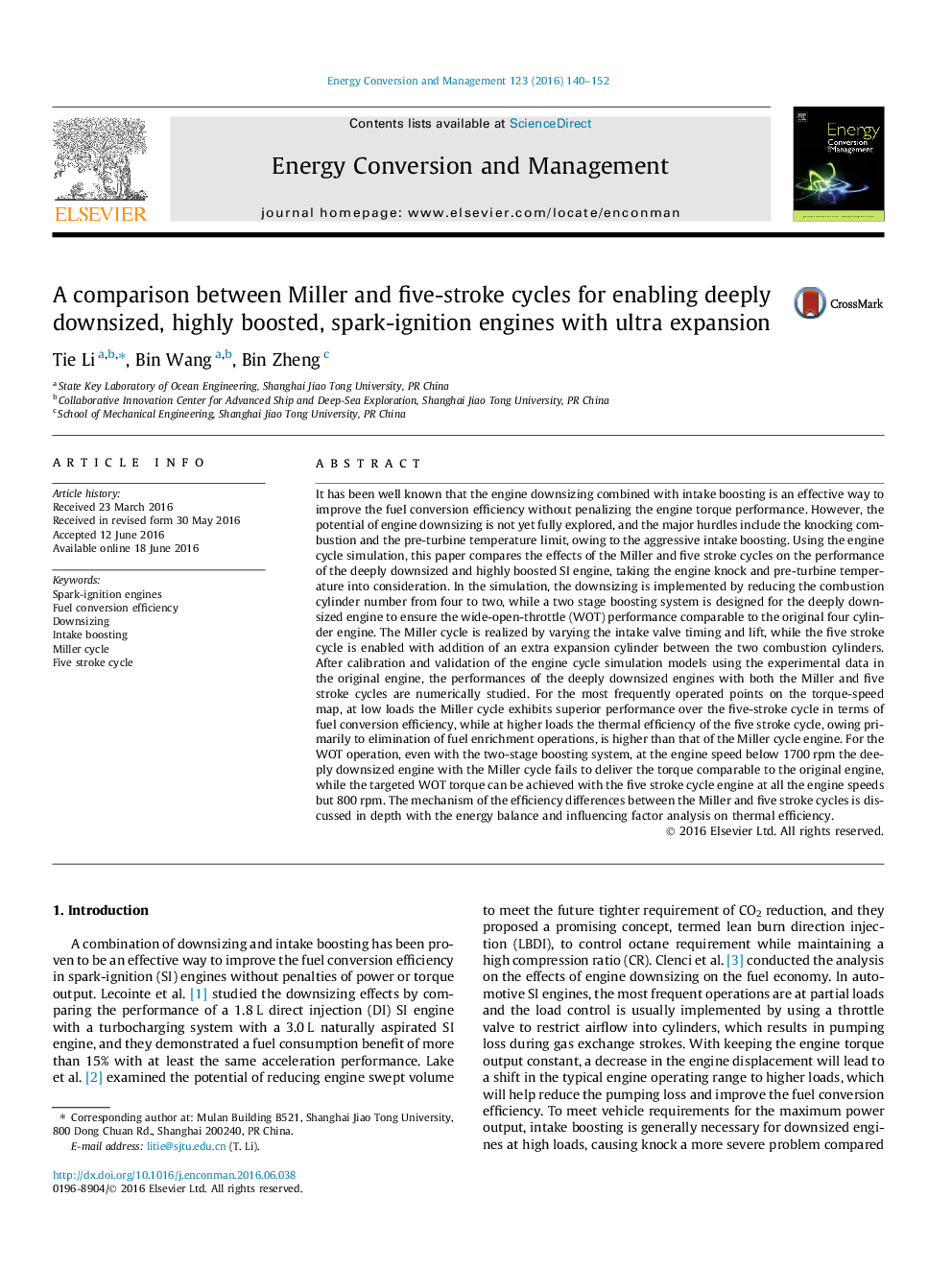| Article ID | Journal | Published Year | Pages | File Type |
|---|---|---|---|---|
| 760153 | Energy Conversion and Management | 2016 | 13 Pages |
•Deeply downsized, highly boosted SI engine with ultra-expansion cycle is studied.•The Miller and five stroke cycles are compared on BSFC improvements and WOT performance.•The mechanism of fuel conversion efficiency improvement at various loads is discussed.•Performance of the two-stage boosting system for the downsized SI engine is investigated.•A unique strategy using the bypass for the five-stroke engine is proposed.
It has been well known that the engine downsizing combined with intake boosting is an effective way to improve the fuel conversion efficiency without penalizing the engine torque performance. However, the potential of engine downsizing is not yet fully explored, and the major hurdles include the knocking combustion and the pre-turbine temperature limit, owing to the aggressive intake boosting. Using the engine cycle simulation, this paper compares the effects of the Miller and five stroke cycles on the performance of the deeply downsized and highly boosted SI engine, taking the engine knock and pre-turbine temperature into consideration. In the simulation, the downsizing is implemented by reducing the combustion cylinder number from four to two, while a two stage boosting system is designed for the deeply downsized engine to ensure the wide-open-throttle (WOT) performance comparable to the original four cylinder engine. The Miller cycle is realized by varying the intake valve timing and lift, while the five stroke cycle is enabled with addition of an extra expansion cylinder between the two combustion cylinders. After calibration and validation of the engine cycle simulation models using the experimental data in the original engine, the performances of the deeply downsized engines with both the Miller and five stroke cycles are numerically studied. For the most frequently operated points on the torque-speed map, at low loads the Miller cycle exhibits superior performance over the five-stroke cycle in terms of fuel conversion efficiency, while at higher loads the thermal efficiency of the five stroke cycle, owing primarily to elimination of fuel enrichment operations, is higher than that of the Miller cycle engine. For the WOT operation, even with the two-stage boosting system, at the engine speed below 1700 rpm the deeply downsized engine with the Miller cycle fails to deliver the torque comparable to the original engine, while the targeted WOT torque can be achieved with the five stroke cycle engine at all the engine speeds but 800 rpm. The mechanism of the efficiency differences between the Miller and five stroke cycles is discussed in depth with the energy balance and influencing factor analysis on thermal efficiency.
